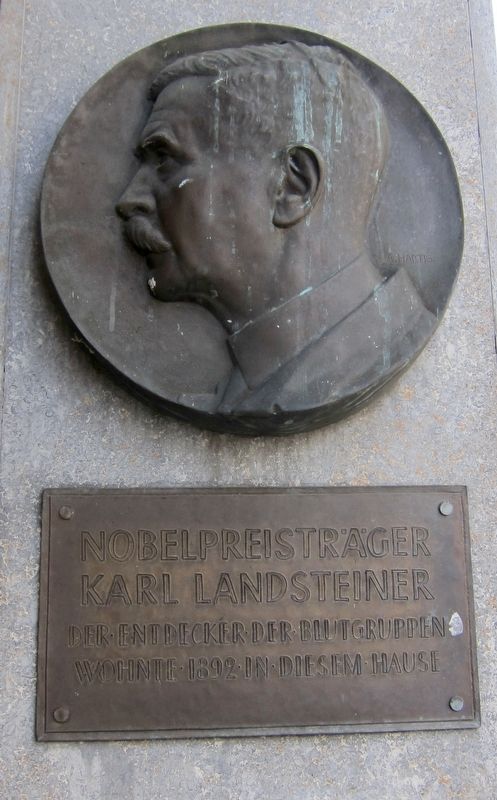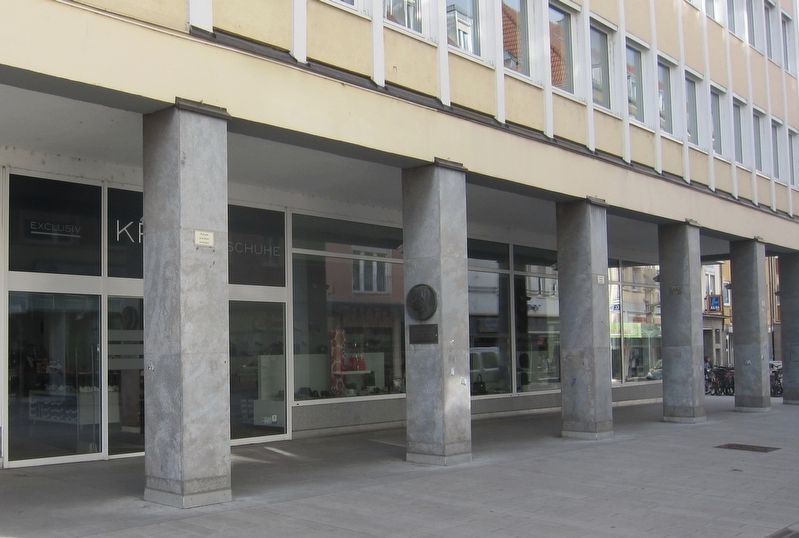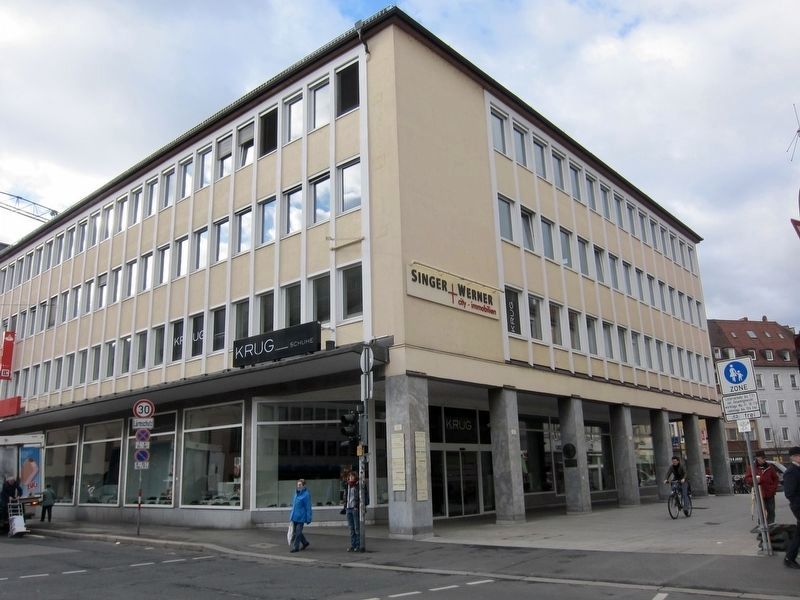Karl Landsteiner
Karl Landsteiner
der Entdecker der Blutgruppen
wohnte 1892 in diesem Haus
The Nobel Prize winner, Karl Landsteiner, who discovered blood groups, lived in this house in 1892
Topics. This historical marker is listed in this topic list: Science & Medicine. A significant historical year for this entry is 1892.
Location. 49° 47.756′ N, 9° 56.069′ E. Marker is in Würzburg, Bayern (Bavaria). Marker is at the intersection of Eichhornstrasse and Theaterstrasse, on the left when traveling west on Eichhornstrasse. Touch for map. Marker is at or near this postal address: Eichhornstrasse 28, Würzburg BY 97070, Germany. Touch for directions.
Other nearby markers. At least 8 other markers are within walking distance of this marker. Carl Caspar von Siebold (within shouting distance of this marker); Julius Reichsgraf Von Soden (within shouting distance of this marker); Albert von Koelliker (about 90 meters away, measured in a direct line); Franz Oberthür (about 90 meters away); Würzburg Jewish Deportation Memorial (about 120 meters away); Rudolf Virchow
Also see . . . Karl Landsteiner (Wikipedia). "Karl Landsteiner, (14 June 1868 – 26 June 1943) was an Austrian biologist, physician, and immunologist. He distinguished the main blood groups in 1900, having developed the modern system of classification of blood groups from his identification of the presence of agglutinins in the blood, and identified, with Alexander S. Wiener, the Rhesus factor, in 1937, thus enabling physicians to transfuse blood without endangering the patient's life. With Constantin Levaditi and Erwin Popper, he discovered the polio virus in 1909. He received the Aronson Prize in 1926. In 1930, he received the Nobel Prize in Physiology or Medicine. He was posthumously awarded the Lasker Award in 1946, and has been described as the father of transfusion medicine." (Submitted on March 20, 2019.)
Credits. This page was last revised on January 28, 2022. It was originally submitted on March 20, 2019, by Andrew Ruppenstein of Lamorinda, California. This page has been viewed 235 times since then and 12 times this year. Photos: 1, 2, 3. submitted on March 20, 2019, by Andrew Ruppenstein of Lamorinda, California.


